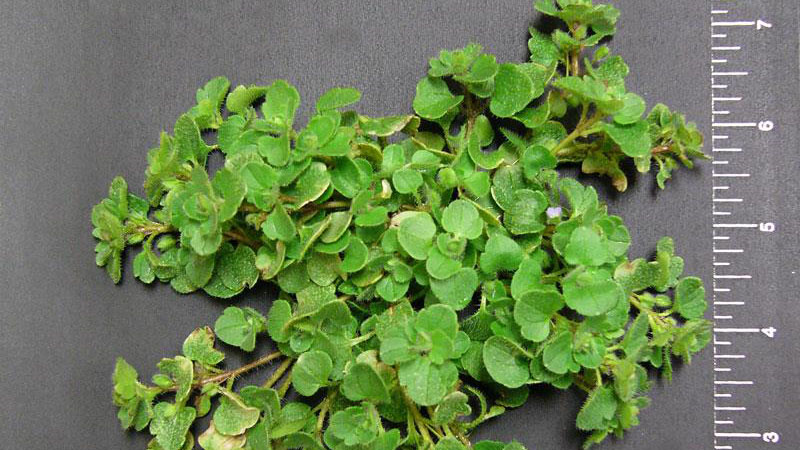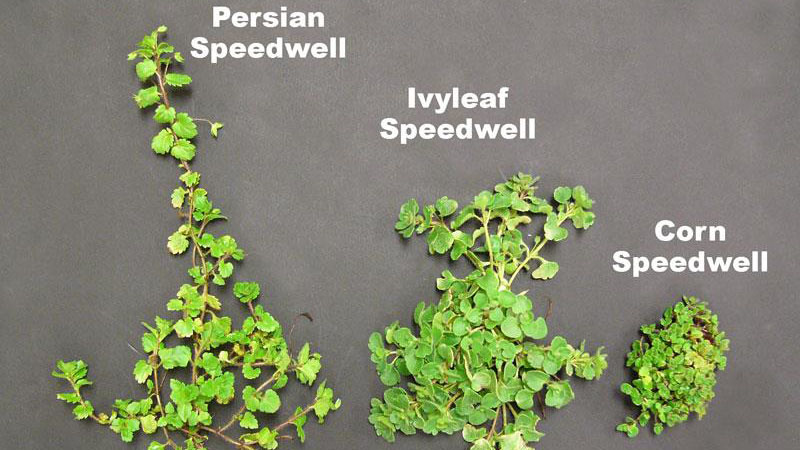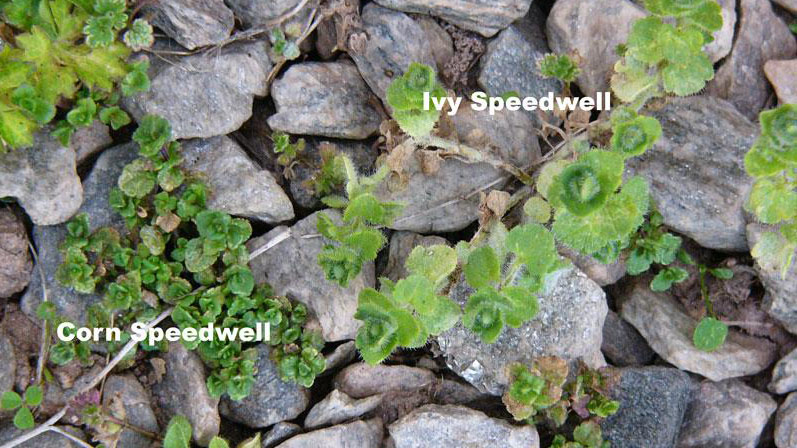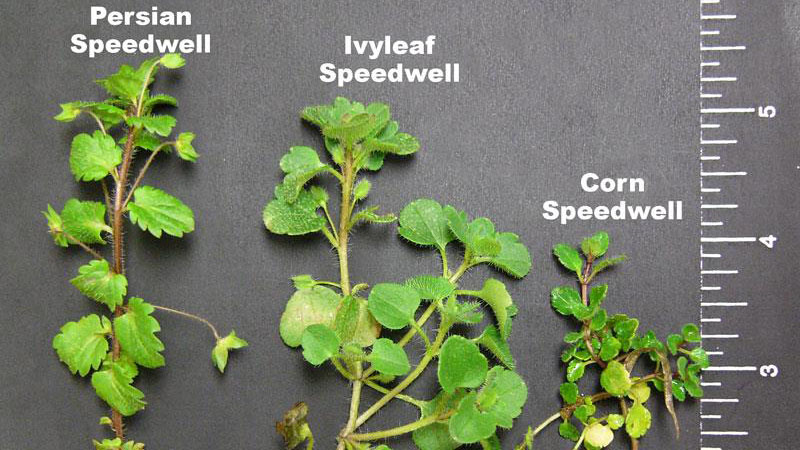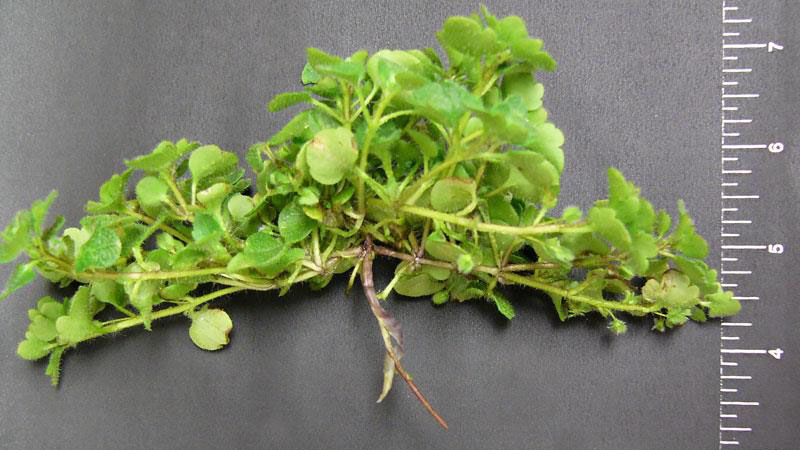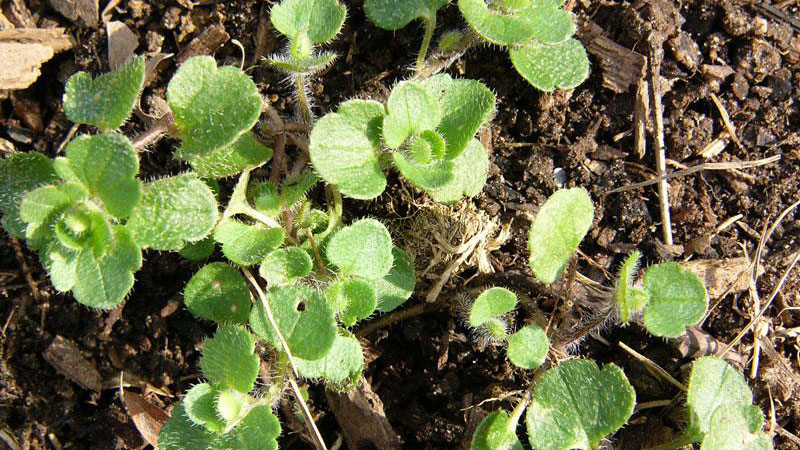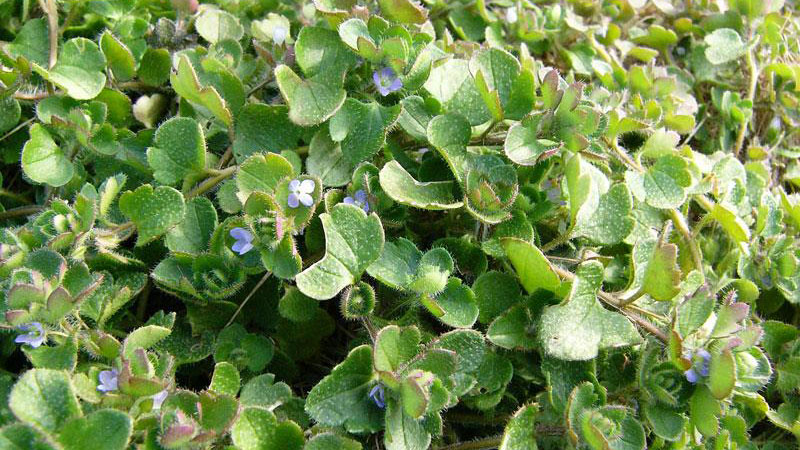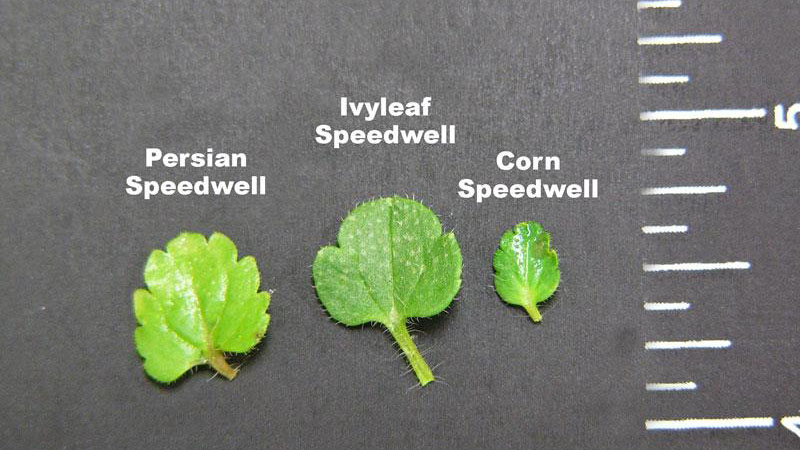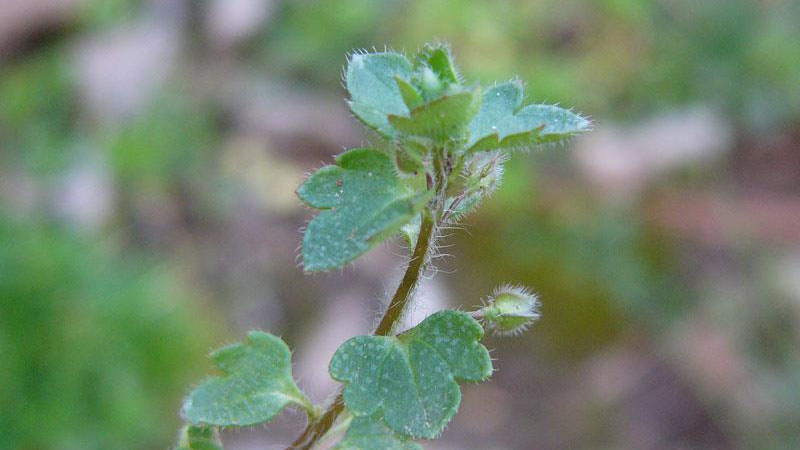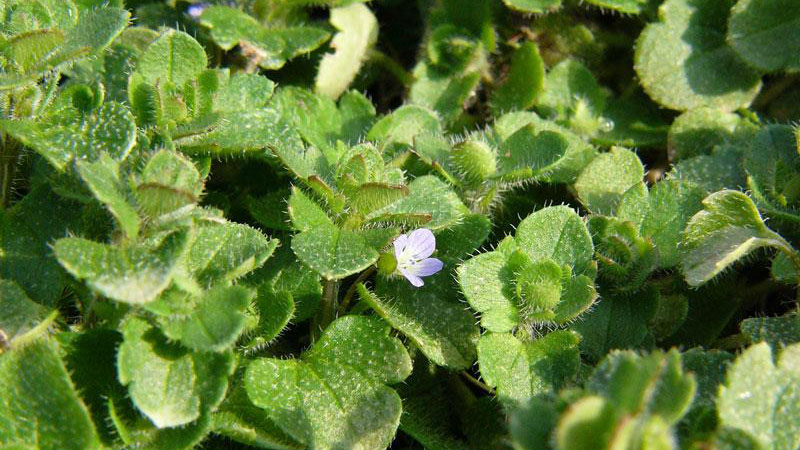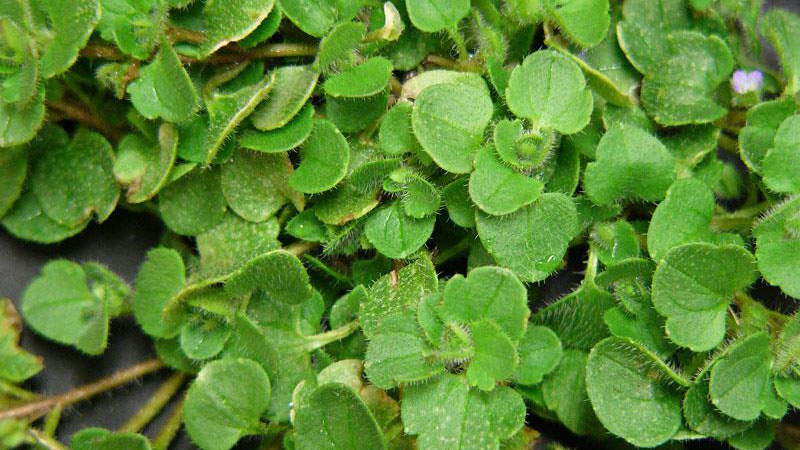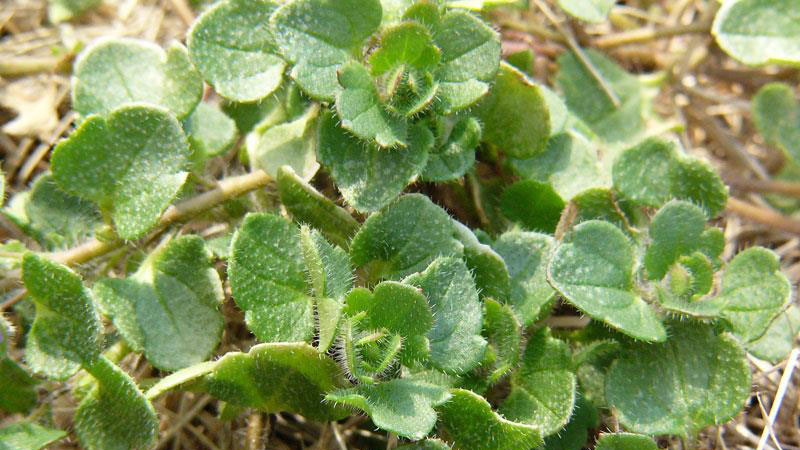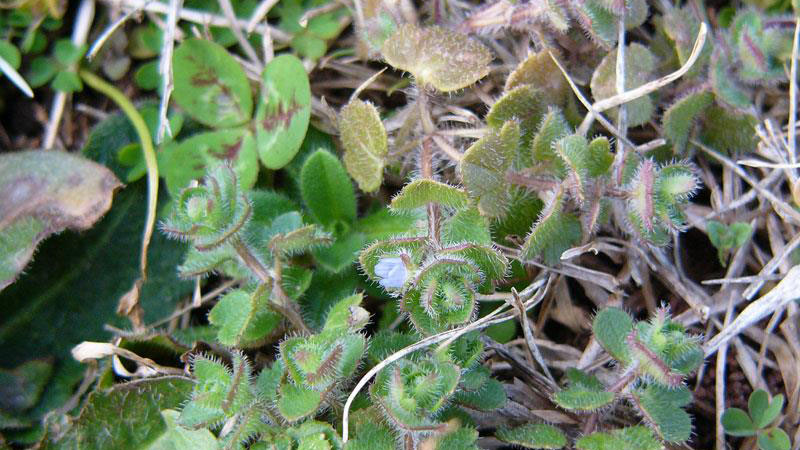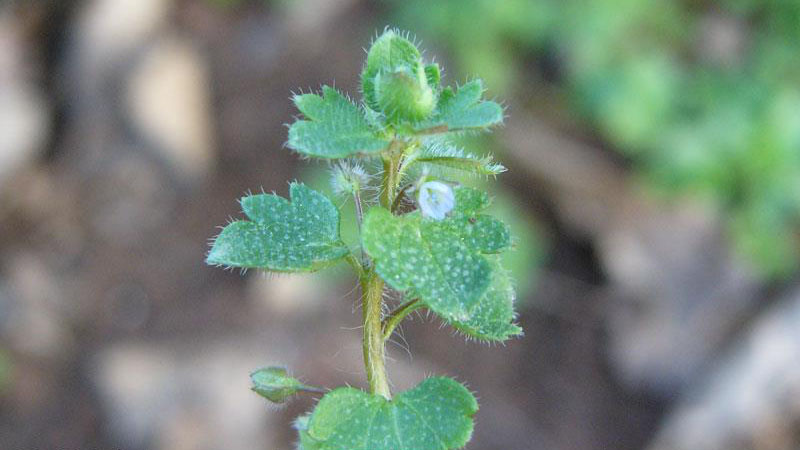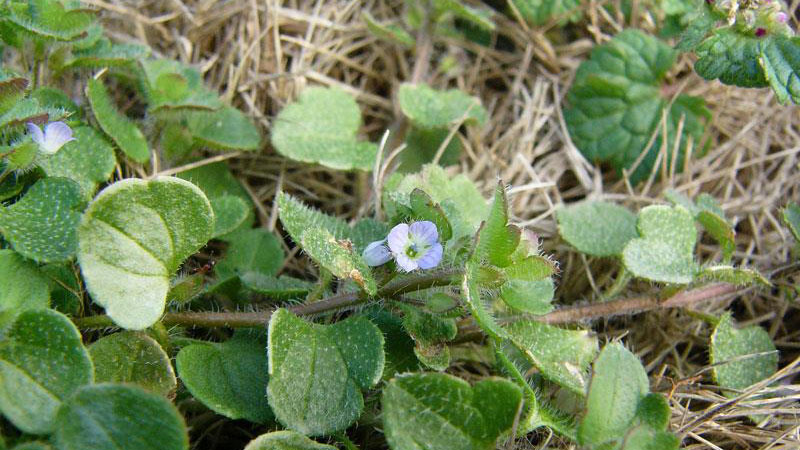Description
Ivyleaf speedwell (Veronica hederifolia) is a common North Carolina winter annual weed found in open fields and grassy areas along roadsides. This plant is low-growing and creeps along the ground like ivy. It has distinctive 3-5 lobed leaves that are densely hairy. Like the other speedwells, the leaves are both alternate (end of stem) and opposite (base of stem). Ivyleaf speedwell leaves are thicker and less serrated than those of either corn or Persian speedwell. Ivyleaf speedwell flowers in the spring. The flowers of both ivyleaf and Persian speedwell are blue and are borne on stalks longer than 1 mm, whereas those of corn speedwell are borne on stalks less than 1 mm in length. The seedpods are heart-shaped for all three species.
Cultural Control
Winter annual broadleaf weeds germinate in the fall or winter and grow during any warm weather, which may occur in the winter, but otherwise remain somewhat dormant during the winter. They resume growth and produce seed in the spring and die as temperatures increase in late spring and early summer. They quickly invade thin turf areas especially where there is good soil moisture. Shade may also encourage growth. A dense, vigorous turf is the best way to reduce the encroachment of this weed. First, select adapted turfgrass cultivars for your area and then properly fertilize, mow, and water to encourage dense growth. Ivyleaf speedwell is similar in appearance to Persian and corn speedwell, but is easier to control than corn speedwell.
Species Data
- GROWTH SEASON / LIFE CYCLE
- winter annual weed
- GROWTH HABIT
- LEAFLET NUMBER
- one
- LEAF MARGIN
- serrated / toothed
Figure 10
- serrated / toothed
- LEAF HAIRS
- LEAF / LEAFLET SHAPE
- heart/kidney/spade
- LEAF VENATION
- palmate
- LEAF ARRANGEMENT
- lower leaves opposite, upper leaves alternate
- ROOT TYPE
- fibrous
- FLOWER COLOR
- blue/purple
Figure 18
- blue/purple
Publication date: Nov. 27, 2017
N.C. Cooperative Extension prohibits discrimination and harassment regardless of age, color, disability, family and marital status, gender identity, national origin, political beliefs, race, religion, sex (including pregnancy), sexual orientation and veteran status.

